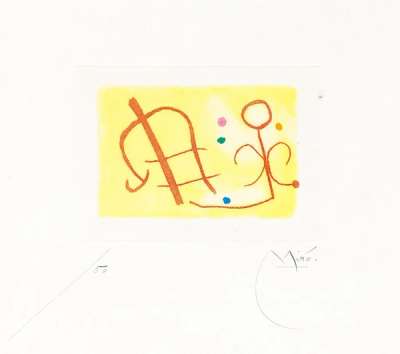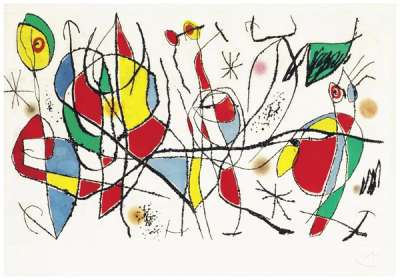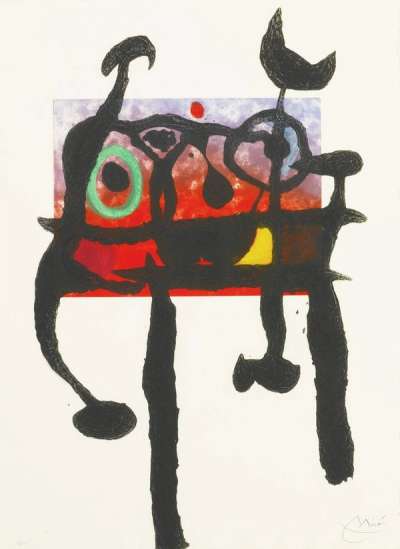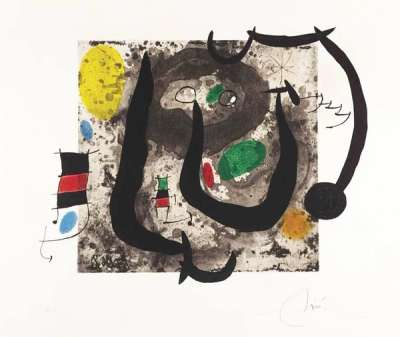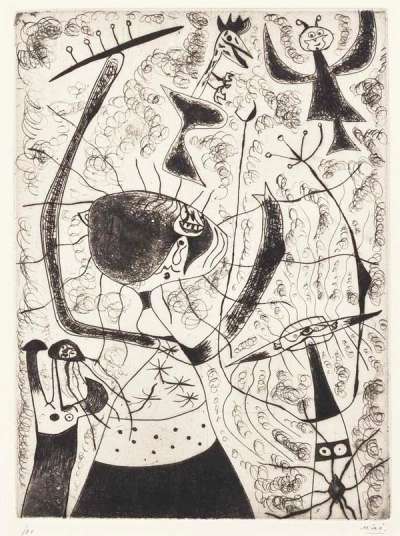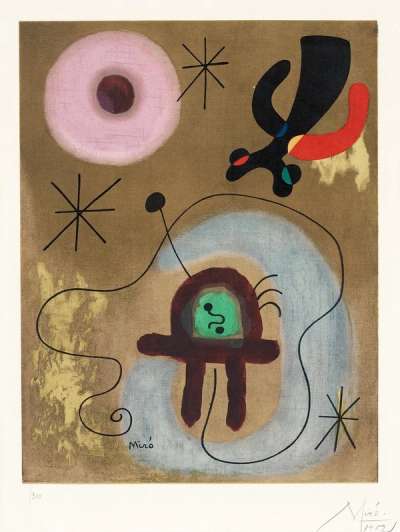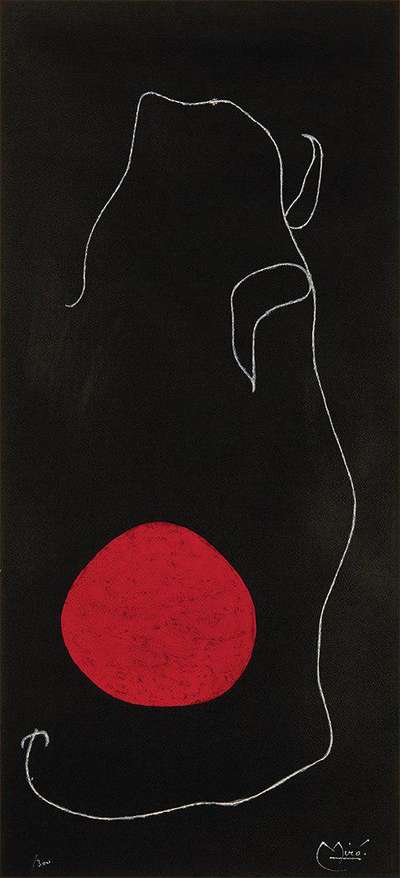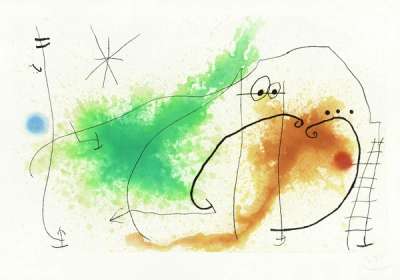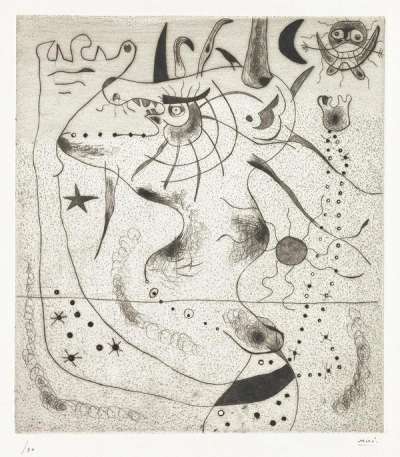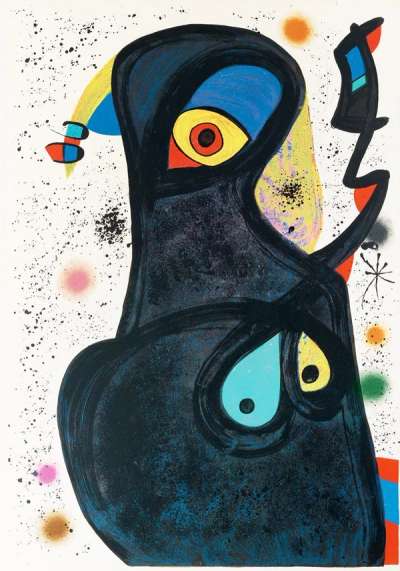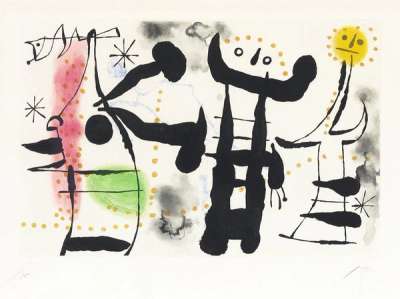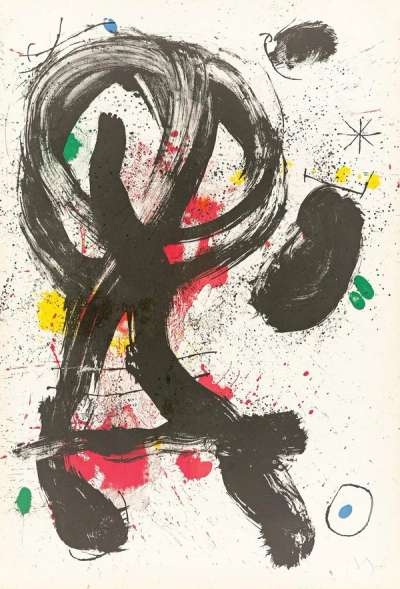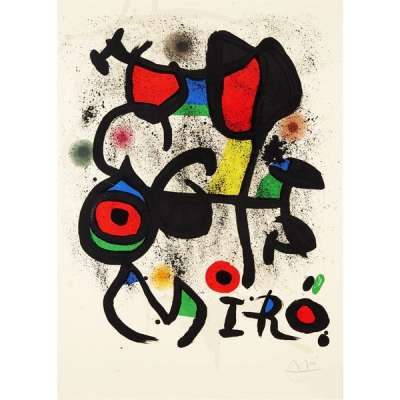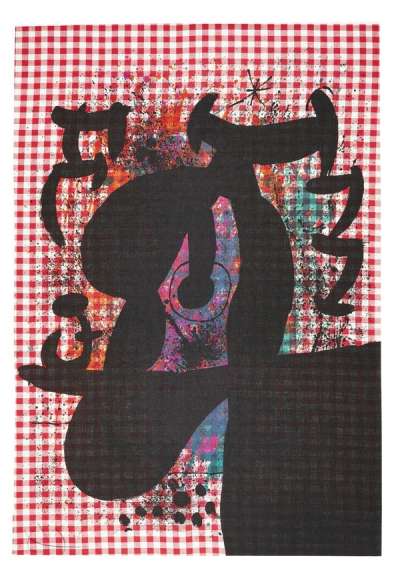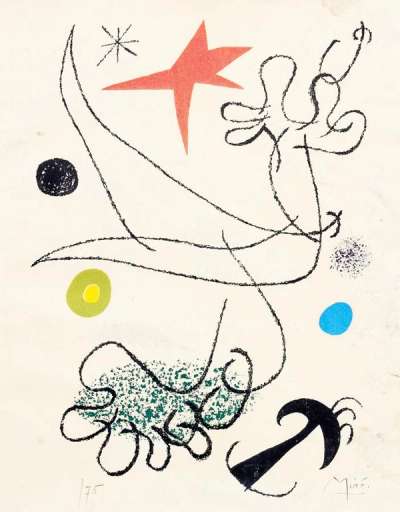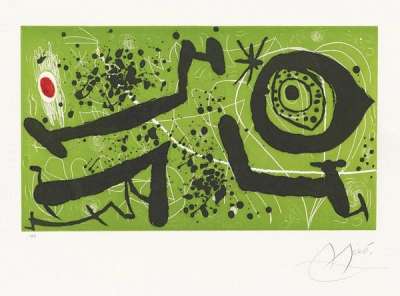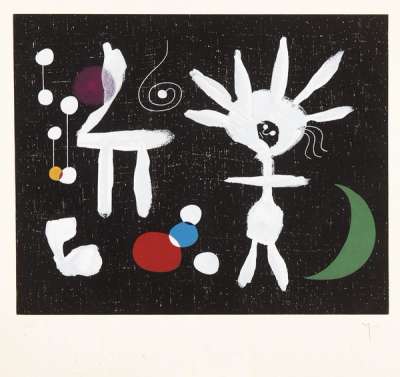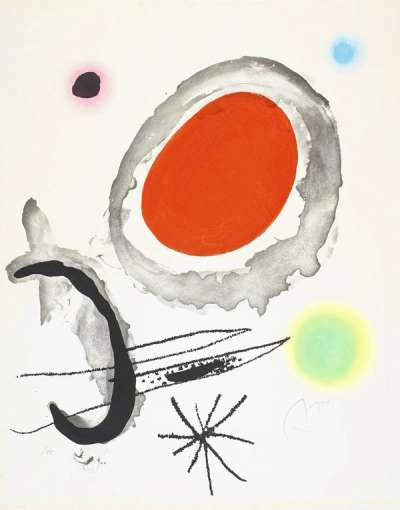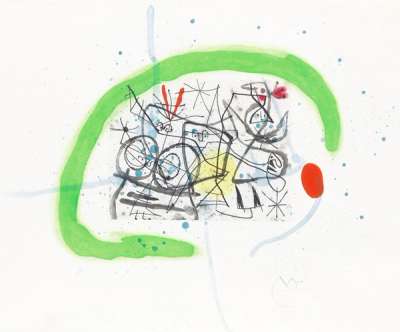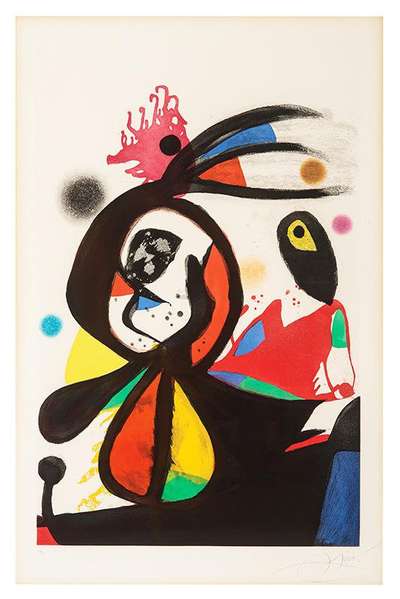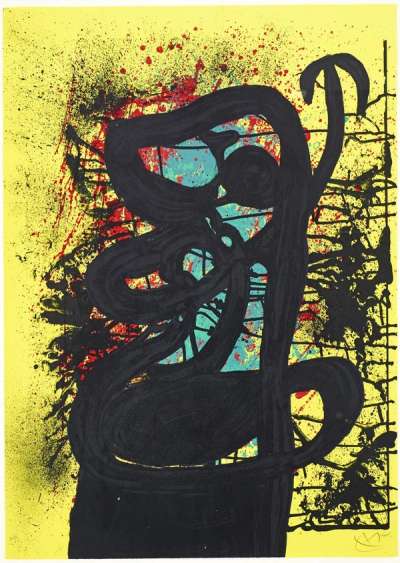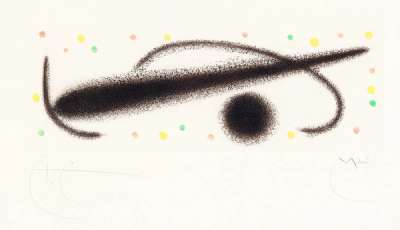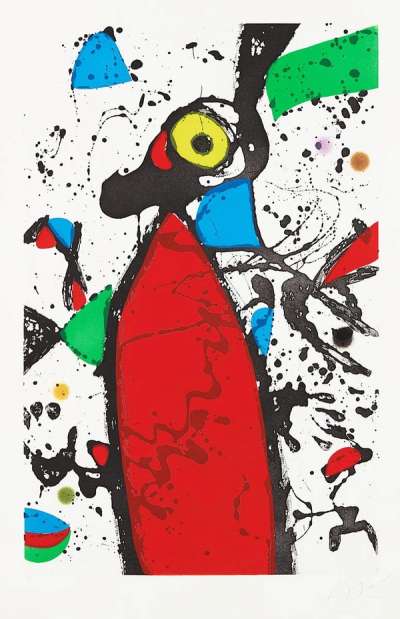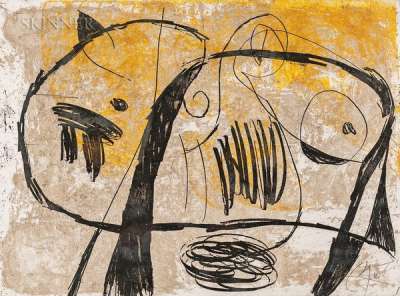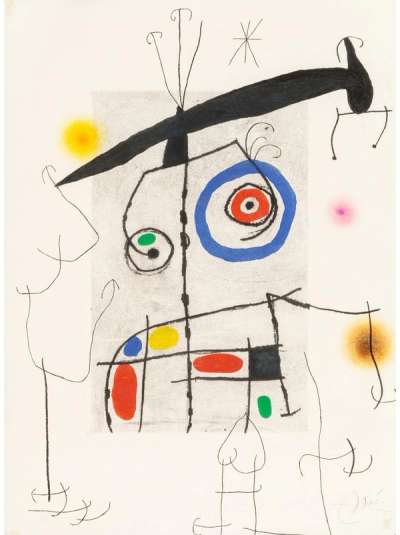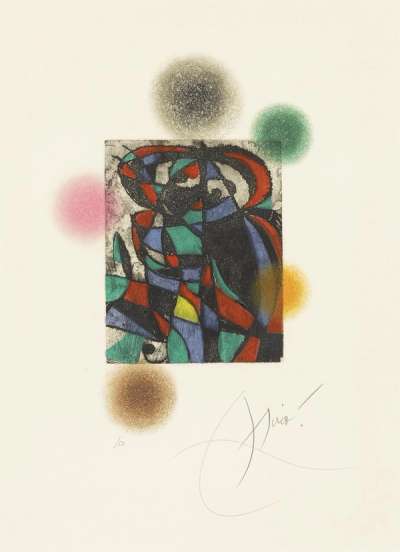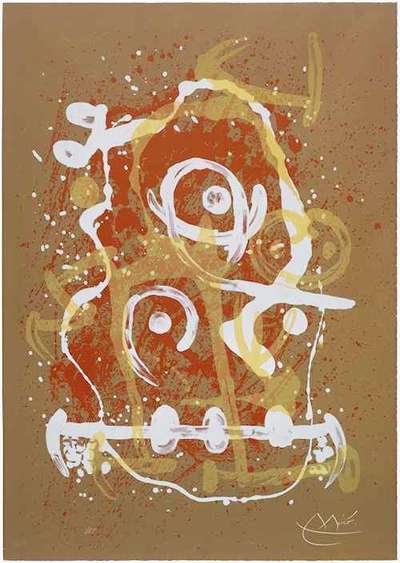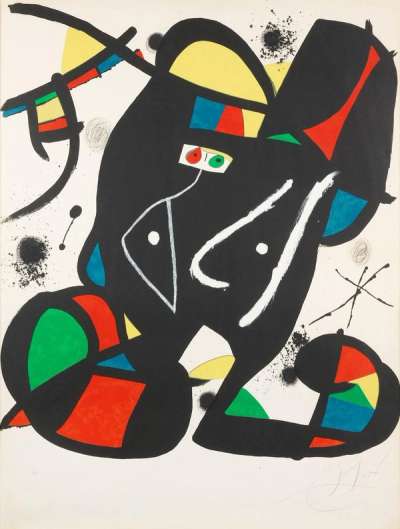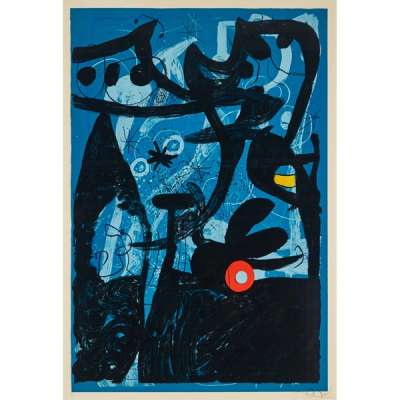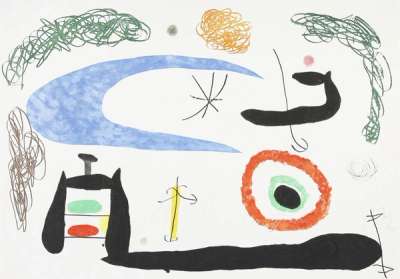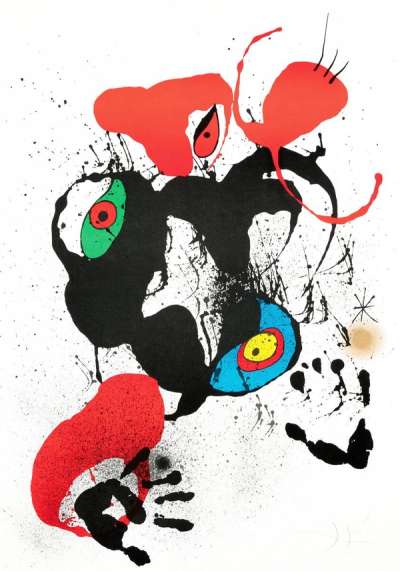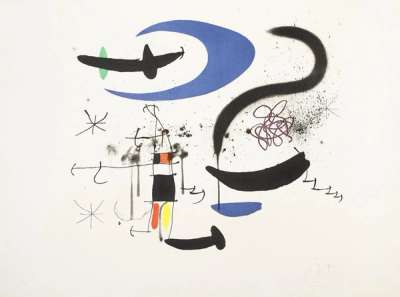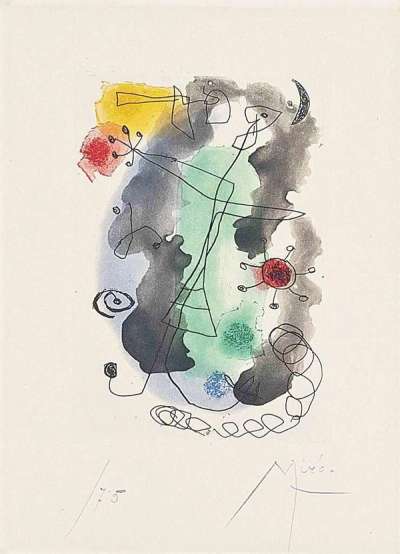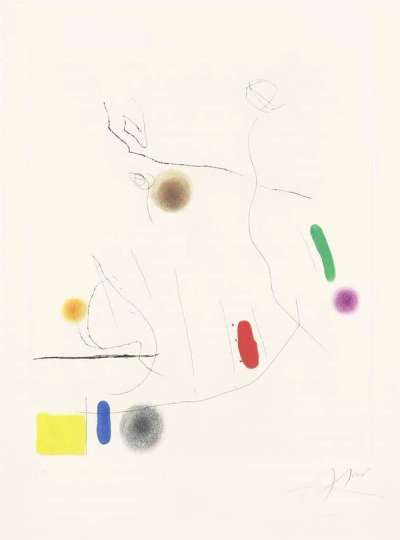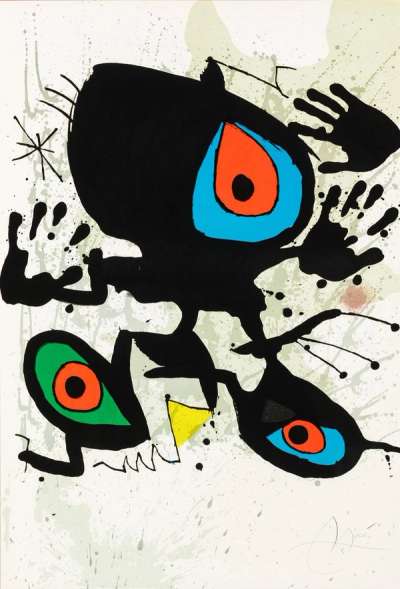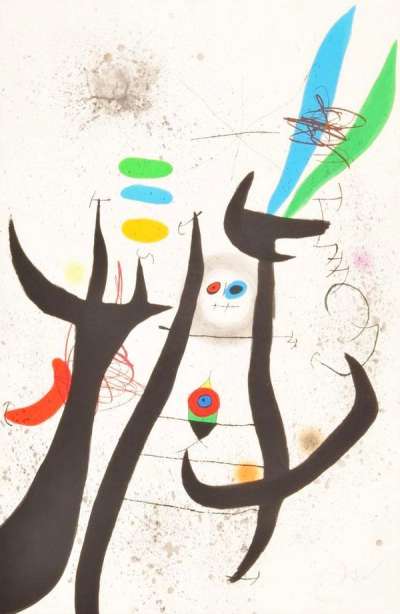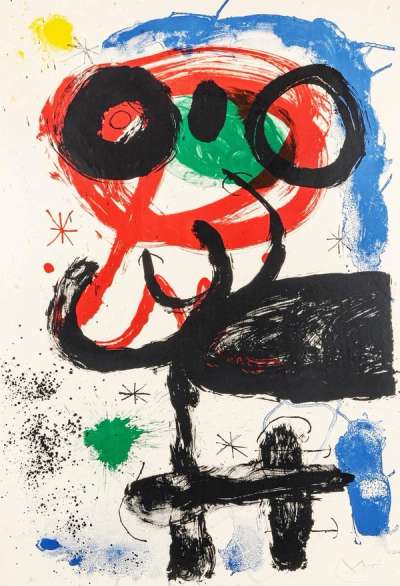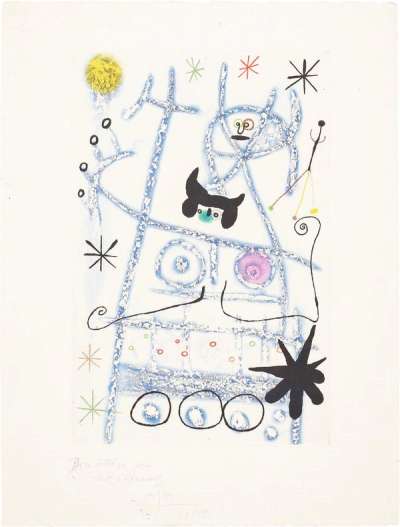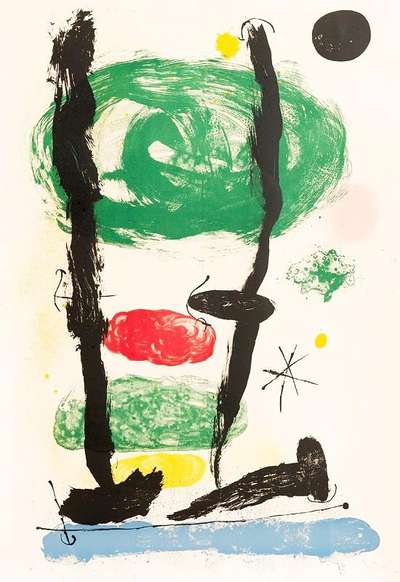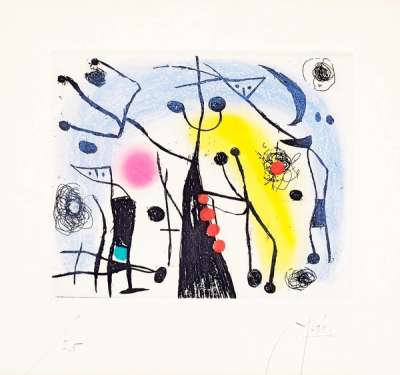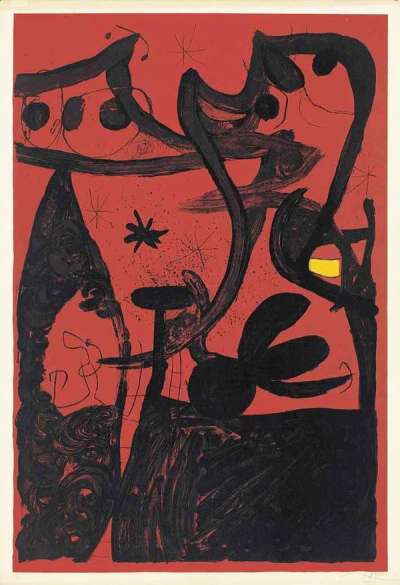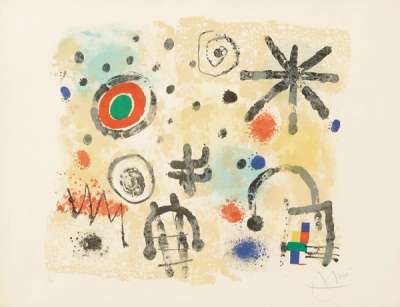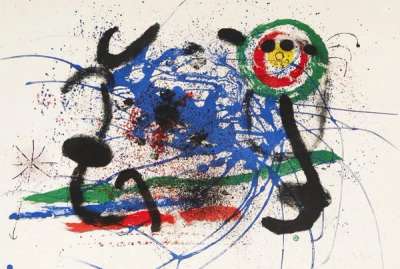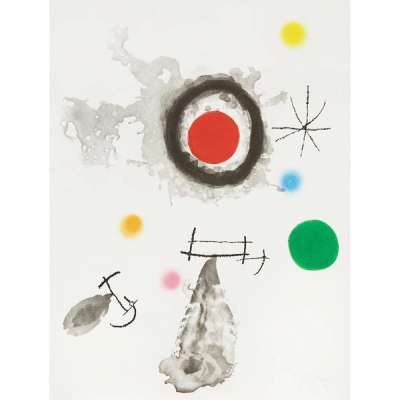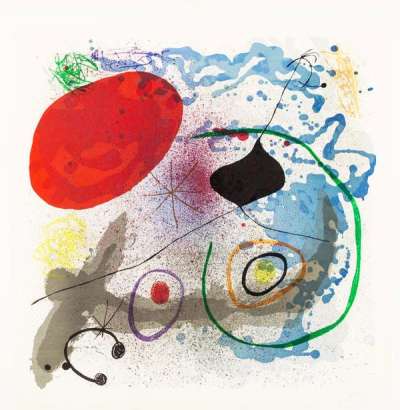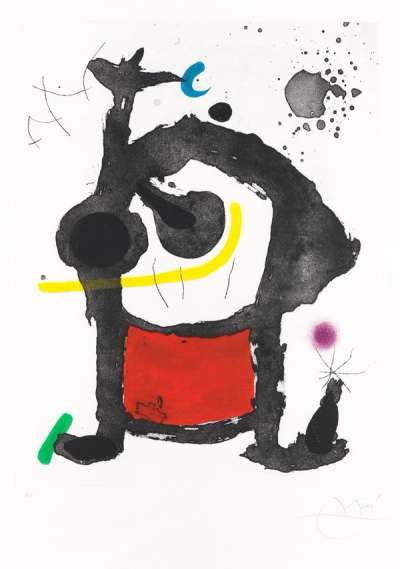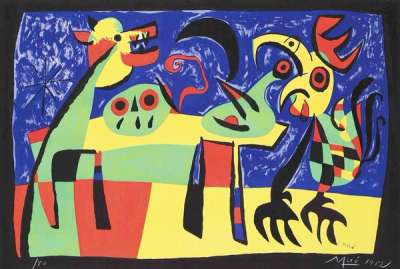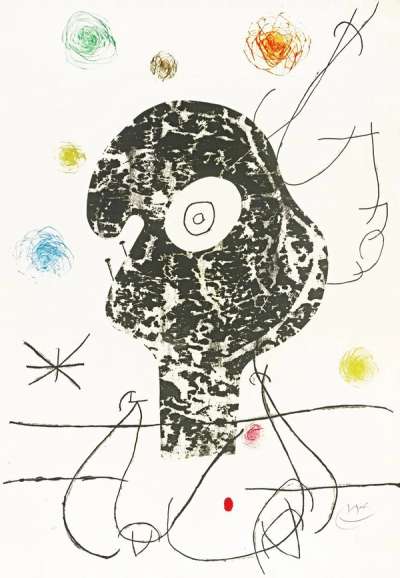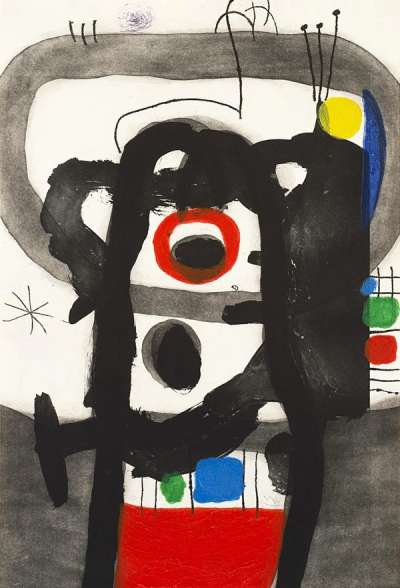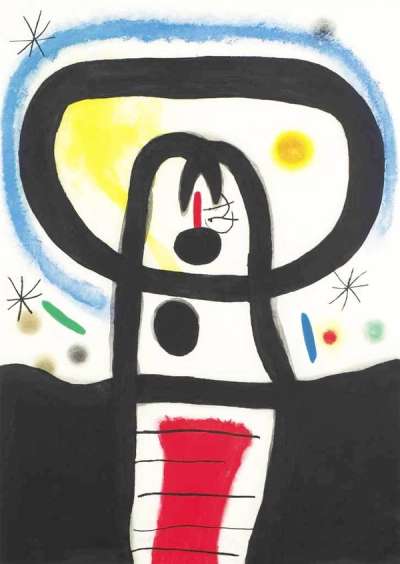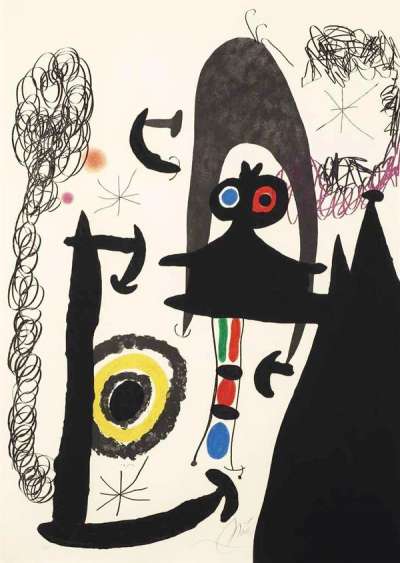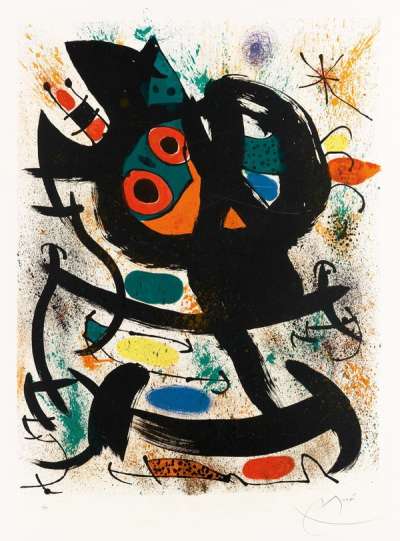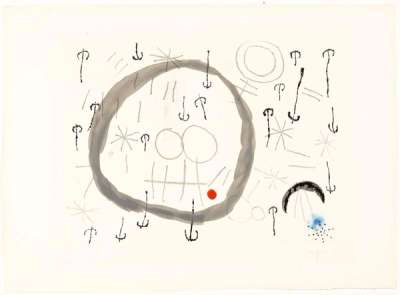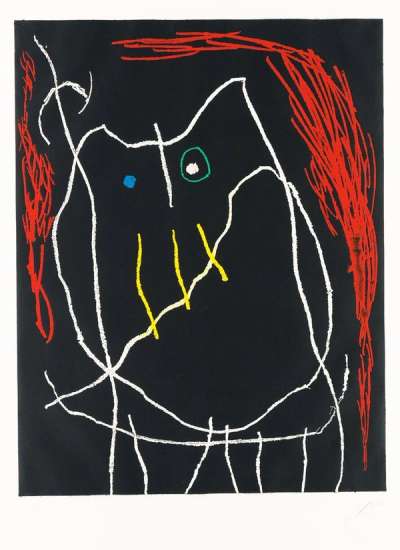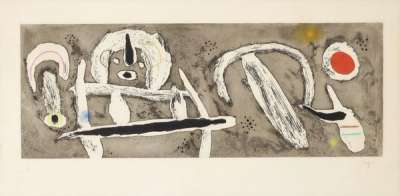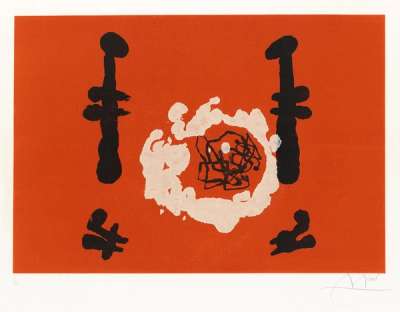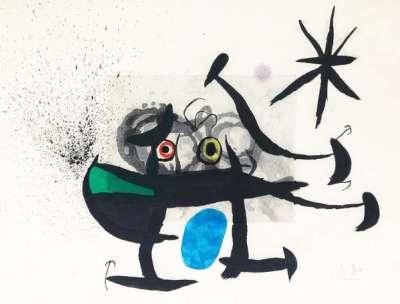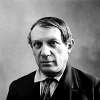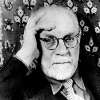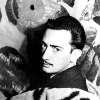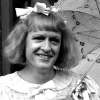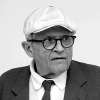Joan
Miro
One of the foremost Spanish painters of the 20th century, Joan Miró uniquely combined geometric abstraction, surreal fantasy and Catalan folk motifs. If you’re looking for original Joan Miró prints and editions for sale or would like to sell, request a complimentary valuation and browse our network’s most in-demand works.
Joan Miro art for sale
Discover Joan Miro prints for sale, exclusively available through our private network of collectors. Explore signed and unsigned screenprints, lithographs, digital prints, and rare editioned proof prints by era-defining blue chip artists.
Sell Your Art
with Us
with Us
Join Our Network of Collectors. Buy, Sell and Track Demand
Biography
Often cited as a forgotten figure in Surrealism, Joan Miró is well-known as the foremost painter of the subconscious mind. Miró’s art combined Catalan Folk Art with Cubism and Surrealism in abstract and dream-like landscapes.
Born in Barcelona in 1893, Miró began making art as early as the age of 7, when he attended drawing classes at a private school in Barcelona’s old town. Later, in 1907, the 14-year-old Miró enrolled at The Escola de la Llotja, a renowned fine art academy. By 1918, Miró had held his first solo show at Barcelona’s Galeries Dalmau. By 1920, he had moved to Paris: the home of the Surrealists.
Many of Miró’s early artworks bear a relationship to the countryside, specifically that of his native Catalonia. Works such as La Masia (The Farm), from 1921-22, depict the inventory of a traditional Catalan farmhouse. The work combines the realist representation of farm machinery with a semi-Cubist and Symbolist treatment of landscape and perspective and expresses Miró’s ‘split’ interests in both traditional Catalan painting, and the artistic movements emerging in Paris. Commenting on the piece, Miró dubbed The Farm ‘the point of departure for what was to follow.’
Miró’s career began to take hold following his move to Paris. After exhibiting both in his native Barcelona and in Paris, where he had a solo exhibition at the private Galerie La Licorne, Miró formally joined the Surrealists in 1924.
During the ‘20s, Miró's work revolved around his famous ‘dream pictures’, like his 1925 The Birth Of The World. The piece features a series of geometric shapes which seem to float above the otherwise grungy, unevenly primed canvas. To create the work, Miró combined expressive painting techniques with carefully calculated composition. He also began to pursue abstraction with a greater intensity, producing his first ‘Blue’ paintings, such as the iconic Etoile Bleue (1927). This work would directly inspire his equally well-known Triptych Bleu, I, II, III (1961).
By the 1930s, Miró had collaborated with influential Surrealist artists, such as Max Ernst, and became fiercely committed to depicting the struggles of his native Spain, embroiled in Civil War from 1936. In 1937, he painted his mural The Reaper – a depiction of peasant revolt – for the Paris World Exhibition. Following the end of World War Two, a period which saw the artist flee the Nazi invasion of France and return to his native Spain, Miró became internationally famous, exhibiting widely in the United States.
